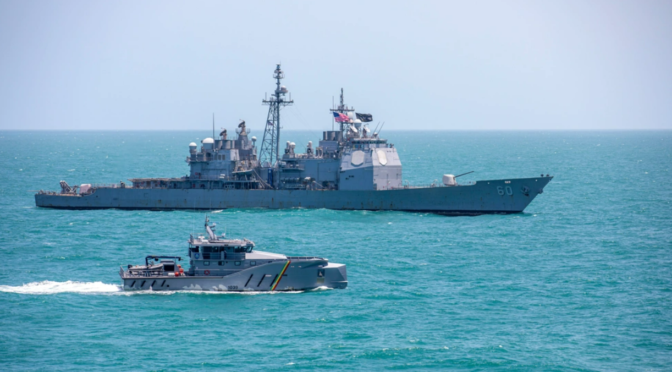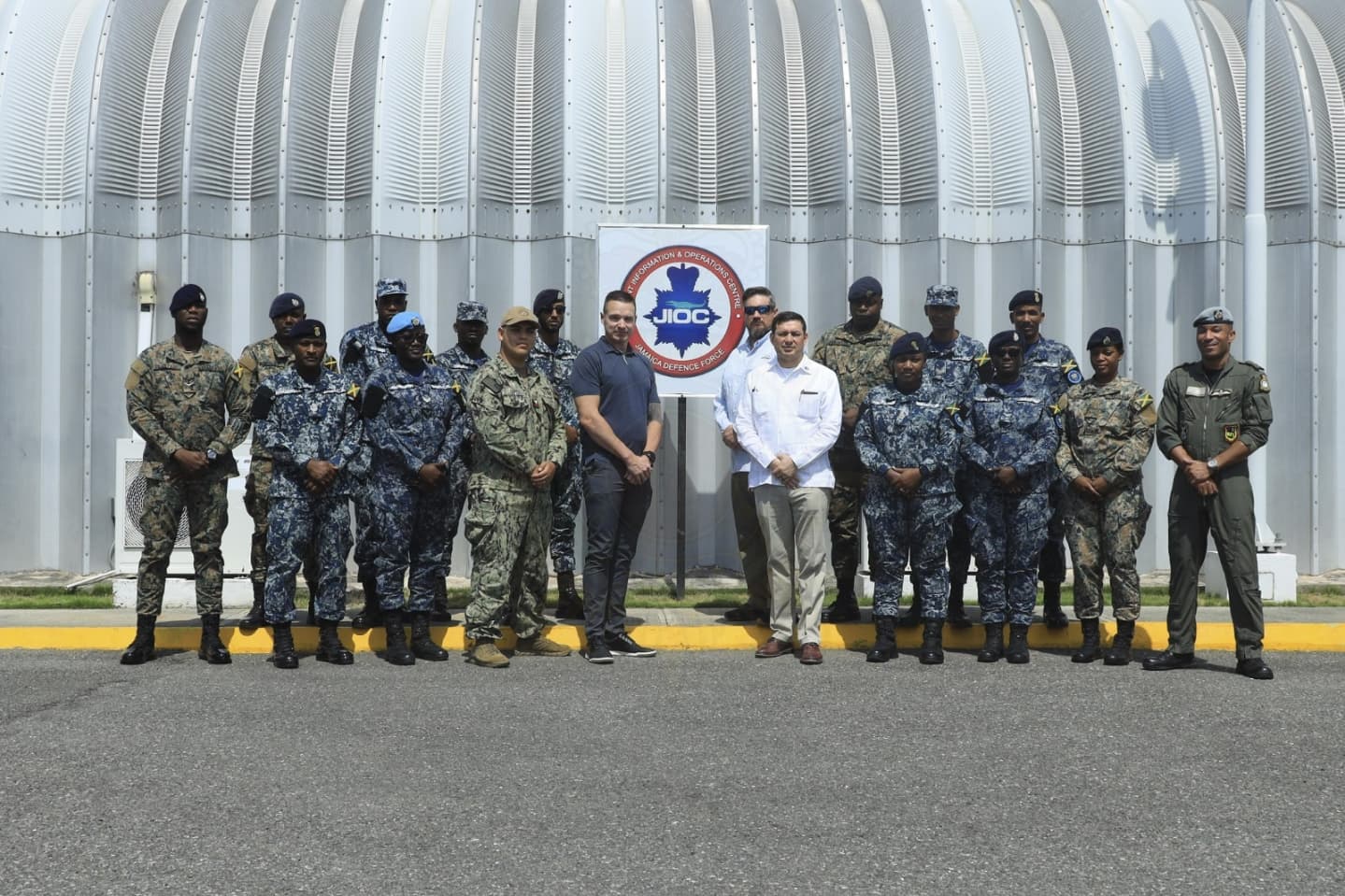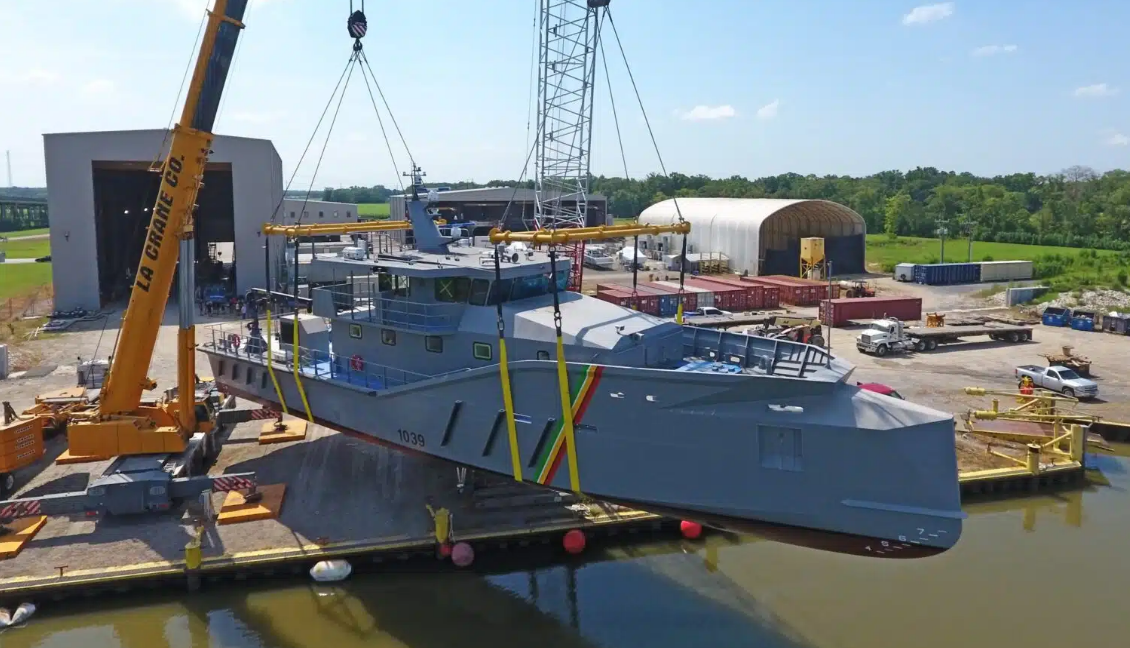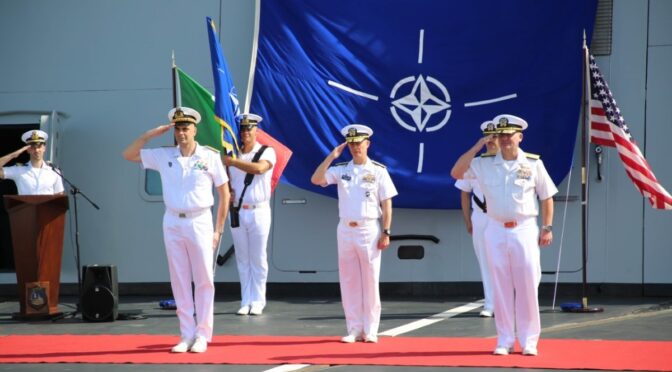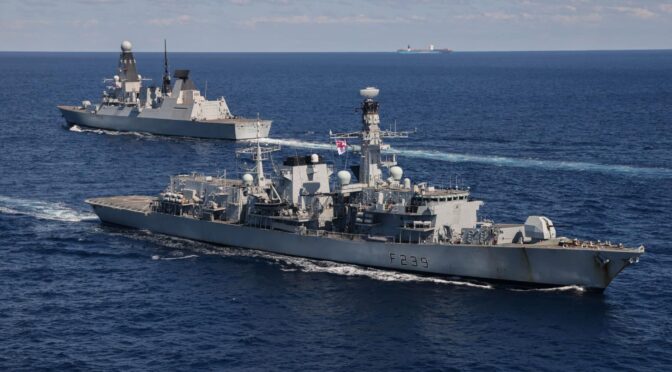This republication is adapted from “War without Surprises—Education for Command in the People’s Liberation Army Navy,” published by the Naval War College Review of the U.S. Naval War College. It is republished with permission.
By Ryan D. Martinson
Most analyses of Pacific scenarios have focused on the quantities and capabilities of the platforms that the PLAN might employ to achieve its campaign objectives. To date, there are very few studies about the people who would operate this hardware or the officers who would command them. This article seeks to contribute to this neglected area of China security studies. Specifically, it examines the role of professional military education (PME) in preparing PLAN officers to command forces in combat.
PME is a key part of military officers’ preparation for command. It teaches them to look beyond the narrow confines of individual platforms or units and to consider the political, operational, and strategic issues relevant to joint action. Perhaps most famously, the USN officers who led the campaign to defeat Japan in the Pacific War—Chester W. Nimitz, William Halsey Jr., Raymond A. Spruance, Richmond K. Turner, and others—leaned heavily on knowledge and experience gained while students at the U.S. Naval War College. The education they received in Newport in the 1920s and 1930s prepared them for leadership by forcing them to grapple with the scenarios, situations, and challenges they later faced in a war with Japan. Repeated simulation of that conflict through strategic- and tactical-level wargames was a core component of their educational experience.
In the PLAN, midcareer officers on the path to senior command are required to complete two separate certificate courses at the Naval Command College (海军指挥学院) in Nanjing. These programs respectively prepare officers to command forces at two different levels of warfare: the high-tactical level (i.e., combined arms) and the campaign level (i.e., operational). In the event of a conflict, the success of China’s maritime operations will depend heavily on its naval officers’ leadership acumen. Thus, the type and quality of instruction they received at the Naval Command College will have a direct bearing on China’s wartime performance.

Education for Command
Located in the city of Nanjing, the PLAN’s Naval Command College is the center of education for midcareer Chinese naval officers. The college provides two main courses of study: (1) an intermediate course, Naval Combined Arms Command (海军合同指挥), for captains, and (2) a senior course, Naval Campaign Command (海军战役指挥), for senior captains. The intermediate course lasts ten months, the senior course five months. Officially, both courses are required for officers on the path to flag rank, but it is unclear to what extent this requirement is enforced. Neither course confers a graduate degree, though the college does also offer separate MA and PhD programs for qualified officers.
Only PLAN officers may enroll in the two courses. While the college does matriculate foreign students, they take a separate course of study. This allows PLAN students to be fully immersed in the best available (i.e., classified) information about their own military and the militaries of potential adversaries. Officers from other PLA services do participate in short-term learning opportunities at the college and may apply to its graduate-degree programs, but none appear to enroll in the naval command courses. PLAN officers who promote to flag rank will later attend a third educational course on joint operational command at the National Defense University in Beijing.
Intermediate Course
As the course title implies, students enrolled in the intermediate course focus their studies on the theory and practice of combined-arms naval warfare—that is, the employment of forces from two or more service arms (surface, submarine, air, marines, and coastal defense) to achieve operational objectives on or from the sea. The curriculum is intended to prepare them to serve in leadership positions at the high tactical level, such as commanding an operation to degrade or destroy an enemy aircraft carrier strike group. Since 2012, the college has required intermediate students to study topics in military and national strategy, in recognition that naval officers—perhaps more so than the officers of any other service—must be prepared to make tactical decisions that could have major strategic consequences. To that end, students take courses such as Strategic Guidance for Maritime Military Operations, taught by Professor Huang Chunyu. While in Nanjing, students are almost certainly required to demonstrate proficiency in Chinese Communist Party dogma, especially as reflected in the speeches and writings of party “core” and CMC chairman Xi Jinping.
Student learning objectives are met through several different pedagogical approaches. Courses had long been taught using a traditional lecture style. However, in 2014 the college began exploring the use of the “flipped classroom” methodology to increase student engagement. This approach requires students to come to class already prepared to discuss the content of outside readings. It is unclear what portion of courses are taught using this method today. Students are also assigned research projects relevant to real-world concerns and germane to their individual experience and expertise. One past project for intermediate students involved research on the best tactics for Chinese ship formations to “raid” (突击) enemy task forces.
Classroom lectures are supplemented by presentations from outside experts, both military and civilian, akin to the U.S. Naval War College’s Lectures of Opportunity. Operational commanders are invited to visit the college to share their firsthand experience from the fleet. For example, in the summer of 2022, soon after completing a major training mission aboard a nuclear-powered submarine, the deputy chief of staff of a PLAN submarine base, Wang Jun (王俊), came to the college to present a lecture on the PLAN’s operational employment of submarines.
In recent years, the college has created programs to foster online collaboration with students and instructors from other Chinese PME institutions. The goal is to bolster student familiarity and awareness of the equipment and weapons (装备性能), operational characteristics (作战特点), and operational methods (战法运用) of other services. This represents an effort to cultivate naval officers capable of serving in joint leadership positions—an imperative in the postreform PLA.
Aside from traditional academic course work, students engage in “practical learning activities” (实践性教学活动) while at the college. Since students cannot practice their new knowledge and skills through the movements of real ships, submarines, missile batteries, and aircraft, they use simulation tools. These are made available in the college’s wargaming center, the Naval Combat Laboratory (海战实验室中心). Students use the laboratory’s facilities to conduct scenario development; one-sided simulations; two-sided, opposition-force simulations (双方对抗); and joint exercises. For example, students might play out a scenario in which Red (i.e., Chinese) surface, air, submarine, and coastal-defense forces must provide “cover” (掩护) for a Red submarine as it tries to break through a Blue (enemy) blockade. Students and instructors also participate in major training and analytic games hosted by the Naval Combat Laboratory. All these simulation activities culminate in a capstone graduation wargame, discussed in detail in the next section.
For some students, these practical learning experiences take place beyond the college walls. In 2012, the college created a program to include students in fleet opposition-force exercises by “embedding” (嵌入) them in Red or Blue command posts. The intention was to provide students with opportunities to “digest the theoretical knowledge” (消化理论知识) they accumulated in the classroom, “master use of operational methods” (掌握战法运用), and “gain familiarity with the real situation at the fleet” (熟悉部队实际). This initiative reflected a deliberate effort by the college to “get closer to the fleet and focus on real combat” (向部队靠拢, 向实战聚焦). Students participate in these exercises under the guidance of college instructors.
After completing the intermediate course, officers are eligible for deputy division leader (副师职) command. A surface warfare officer, for example, could be assigned to serve as the deputy commander of a destroyer flotilla (副支队长). From that position, they may, for example, deploy as the commander of a PLAN surface task force operating in contested areas of the East China Sea, with ample opportunity to apply the skills and knowledge learned in Nanjing.
Senior Course
Beginning in September, the senior course lasts five months. While in Nanjing, the officers study “the theory of joint operational command” (联合作战指挥理论), “familiarize themselves with the employment of forces from other services and service arms” (熟悉军兵种运用), “research joint campaigns and operational methods” (研究联合战役战法), and study historical naval campaigns. Students likely master current PLA campaign doctrine and strategic guidelines as promulgated by the CMC, in preparation for their future roles. Instructors assign senior students research projects relevant to their warfare foci, such as best approaches to prevailing in a contest over a disputed island. Like students in the intermediate course, senior students sometimes are sent out to the fleet to embed in command posts, both Red and Blue, during opposition-force exercises. Given the new emphasis on jointness, students have the option of visiting other PME institutions to learn how different services operate. As in the intermediate course, simulation is a major part of the curriculum, with a focus on the operational or campaign level of war. After graduation, senior students are eligible to serve in billets with the grade of division leader (正师职). A graduate could, for example, command a destroyer flotilla, or serve as the deputy commander of a naval base.
The Capstone Graduation Exercise
In January or February each year, students from the intermediate and senior command courses participate in a campaign-level capstone wargame formally called the “graduation joint exercise” (学员毕业联合演习). The exercise, code-named SEA PLAN (筹海), occurs over seven to ten days and involves about two hundred students plus approximately one hundred outside observers and participants from other PLAN units, the theater commands, and other PLA services.
Though called “exercises” (演习) or “drills” (演练), these events meet the basic definition of a wargame (兵棋推演) as understood in both China and the West: namely, a simulated conflict involving opposing sides, who make decisions on the basis of established rules. Participants are divided into Red and Blue—and often Green (i.e., third party)—teams. Each side comprises different cells representing different levels of leadership in the chain of the command. The teams are given objectives and develop plans to achieve them. The conflict progresses on the basis of alternating decisions made by the warring sides, expert judgments about the outcomes of these decisions, external circumstances controlled by game directors, and, of course, chance.
The annual SEA PLAN exercise is a major event at the college. The college’s president is heavily involved in the game; he or the political commissar serves as the overall exercise director (总导演). The head of the college’s Training Department and the college’s vice president serve as his deputies (副总导演). Executive game directors are senior members of the college faculty. The game director (导演组组长) for the 2021 SEA PLAN exercise, for example, was Ji Shixun (计世勋), head of the college’s Operational Command Department.
The capstone exercise is also a major event for the PLAN and the rest of the military. Personnel from the theater commands, other services, and PLAN Headquarters commonly send observers to the games. SEA PLAN is considered a model for a campaign-level “command opposition-force exercise” (指挥对抗演习). Therefore, training departments from across the fleet send personnel to watch, participate, and learn.
The SEA PLAN exercises are held in the college’s Naval Combat Laboratory. The laboratory is considered the PLAN’s most advanced facility for campaign and tactical-level wargaming. It has been designated a “key warfare laboratory” (全军重点实验室), one of the few within the Chinese military. It is the navy’s only warfare lab (作战实验室) that does campaign and tactical simulation training, operational-methods research, and testing and validation of operation plans. One PLA Daily article described the laboratory as “famous across the whole military” (全军著名的). Housed in “a mysterious structure” (一栋神秘建筑) next to the main teaching building, it is rarely photographed, either inside or outside.
Students from both the intermediate and senior courses participate in the Red cells, with senior course students serving as campaign-level leaders. Students make the bulk of the decisions, applying the knowledge they learned in the classroom. College faculty members grade them on their performance.
While some students are assigned to the Blue and Green teams, many of these positions are filled by college faculty members—specifically, personnel from the college’s Blue Team Center (蓝军中心). Created in August 2012, the Blue Team Center serves as a think tank comprising thirty-plus faculty experts who engage in intensive study of the strategies, doctrines, tactics, operational concepts, organization, and leadership culture of real-world potential adversaries. Members of the college’s Blue Team Center are much sought after by the fleet for their expertise and frequently travel to support fleet exercises, providing advice to exercise organizers and playing members of Blue or Green command posts.
SEA PLAN organizers craft games that are intended to be realistic. Scenarios are based on real-world concerns and real-world adversaries or potential adversaries. Students who play Red are playing China. Participants who play Blue or Green are playing Taiwan, Japan, Vietnam, the Philippines, or the United States, depending on the scenario. For Red, the game’s command interface is based on the Integrated Command Platform (ICP) actually used by the PLA since late 2008. The capabilities of Red forces match existing Chinese capabilities. The same goes for Blue and Green. Students are required to give mock press conferences to explain and defend their side’s actions, as military officers might be required to do in an actual conflict. Students apply real doctrinal concepts, such as the “Three Warfares” (legal warfare, psychological warfare, and public opinion warfare), to their campaign execution.
Red’s command levels are based on existing command-and-control structures, which have changed in recent years. The designers of SEA PLAN–2016 eliminated fleet command-post cells, replacing them with joint maritime operations command posts, which, as in the real world, had the authority to command all PLA forces operating over water. According to participants, the new command-and-control arrangements increased the speed and efficiency of force employment, though commanders apparently had a difficult time processing the larger amount of information they received. To make these cells more realistic, the college invited outside experts to play other-service members in the joint cell. For the 2021 capstone exercise, for example, the college invited nearly a hundred outside personnel from the PLAGF, PLAAF, PLARF, and PLA Strategic Support Force from an unnamed theater command (probably the Eastern Theater Command) to play in the game cells.
SEA PLAN scenarios echo real-world events and concerns. In the Xi Jinping era (2012 to present), several of the games have involved “gray zone” incidents that escalated to armed conflict. For example, the 2014 war-game scenario started with a collision between a Red coast guard cutter and a Blue warship, resulting in injuries to Red personnel. The incident quickly escalated to conflict. The 2016 game centered on Red’s defense of a large oil-and-gas-drilling platform presumably placed in contested waters, a scenario identical to that which occurred between China and Vietnam from May to July 2014 in the South China Sea. In the 2017 game, Red installed an “ocean monitoring station” (海洋监测站) in a disputed area, leading to a forceful response from Blue, including “obstruction and sabotage” (阻挠和破坏). At the time, the PRC was planning to install such a station at Scarborough Shoal, though it ultimately chose not to. The 2021 game was a Taiwan conflict scenario, presumably reflecting the growing tensions over the status of the island nation.
Naturally, U.S. military intervention in the types of regional conflicts being wargamed is a major concern for the players, and the college often includes a Green cell to play the United States (for those games where the United States is not the opposing Blue force). Green forces intervene in the conflicts in a variety of ways: they employ electronic warfare to obstruct Red operations; invent legalistic rationales for maintaining presence in the vicinity of the conflict, complicating Red’s actions; and share intelligence on Red with their partners and allies. In the 2021 game, Blue (as the United States) directly intervened in a Taiwan crisis, leading to armed conflict with Red. The episode began with a battle of wills: Blue insisted on maintaining a humanitarian corridor by creating no-fly and no-sail zones (禁飞禁航区) adjacent to the island. It then dispatched aircraft to the scene to conduct electronic-warfare attacks “to isolate the battlefield” (战场阻隔), putting Red in “a very difficult spot” (防不胜防). Red employed ocean surveillance vessels and antisubmarine warfare aircraft—which dropped large numbers of sonobuoys—to track Blue submarines operating in the area. Game adjudicators judged these efforts to be successful, with one Blue submarine sunk, the victim of a torpedo fired by a Red surface combatant. Blue responded with “integrated air and sea strikes” (海空一体打击行动) with the support of unmanned aerial vehicles employing electronic-warfare tactics, sinking or damaging several Red ships. Ultimately, Red prevailed by leveraging what its campaign commander—Senior Captain Jiang Zhonglin (蒋忠林)—described as its “obvious joint strike advantages in the theater” (我作战海区联合打击优势明显).
Conclusion
Fifteen years after the end of World War II, the then-retired Chester Nimitz visited the U.S. Naval War College, where he praised the institution for its valuable role in preparing naval officers like him for command in the Pacific. Perhaps with some exaggeration, he declared: “The war with Japan had been re-enacted in the game rooms here by so many people and in so many different ways that nothing that happened during the war was a surprise—absolutely nothing except the Kamikaze tactics toward the end of the war; we had not visualized those.” That is high praise—and similar to what may well be applied by PLAN admirals to the Naval Command College in the future.
As this article has shown, the college at Nanjing is almost entirely focused on preparing naval officers to serve command positions in the future maritime conflicts that China is most likely to fight. Students participating in the intermediate-level course are dedicated to the study of combined-arms naval command, while officers in the senior course concentrate on naval campaign command. In recent years, course work on strategic-level issues has been introduced to ensure commanders are able to grasp the larger context of their actions, but the core purpose of learning is to cultivate naval officers who can make rapid and smart decisions about how best to employ Chinese naval assets to prevail in conflict at sea.
The PLAN Naval Command College’s focus on naval warfare is reflected in its full embrace of educational wargaming. Gaming is treated as a didactic tool for both the intermediate and senior courses. Students are expected to leverage the advanced facilities available at the college’s Naval Combat Laboratory—the PLAN’s most advanced facility for tactical- and campaign-level wargaming. Moreover, the heart of the college’s academic calendar is a seven-to-ten-day capstone wargame held each winter. The school’s senior leaders are directly involved in the game, a reflection of the importance attached to it. The college assigns members of its Blue Team Center—the PLAN’s premier corps of experts on China’s future enemies—to join the Blue and Green cells. The scenarios are realistic, and the capabilities, organization, and doctrines of Red, Blue, and Green are intended to reflect real life. The result appears to be a highly valuable educational experience for the participants. In the words of one recent student, Li Haichen (李海臣), the sense of “shock and reflection brought by this exercise will follow me throughout my career.”
In sum, the Naval Command College strives to provide midcareer officers with a full appreciation of the conflict scenarios China could face and the military problems with which PLAN officers must grapple to serve as effective wartime commanders at the high-tactical and operational levels of war. Therefore, graduates should return to the fleet well versed on the PLAN’s best estimates of how the next maritime conflict might start, where it will take place, who will be involved, and what roles PLAN forces will be expected to play.
This preparation, of course, does not guarantee superior command performance in China’s next conflict. As the profiles of three recent graduates of the senior course suggest, students come to Nanjing very raw, with deep experience in a particular warfare community, often in a single unit or geographic area, but with little if any meaningful engagement with other warfare communities in the PLAN, let alone joint experience. It is difficult to imagine that a mere five months at the college can transform these students into effective campaign-level commanders. Moreover, despite some efforts by the college to teach students about the cultures, capabilities, and jargon of other services, it fundamentally remains an institution focused on naval education. This focus puts it at odds with the current PLA imperatives to cultivate officers prepared for joint command. Lastly, effective wartime leadership requires a number of other qualities that may not—perhaps cannot—be cultivated at the Naval Command College, owing to factors inherent in China’s Leninist system. These involve questions of character, individual empowerment, and independence of thought.
Nevertheless, the PLAN’s approach to midcareer officer education should prompt some reflection within U.S. PME institutions—above all, within the U.S. Naval War College. Do existing curricula strike the right balance between strategy and policy studies and the practice of modern naval warfare? Do all graduates depart the College with a solid understanding of the capabilities, doctrines, and organization of the country’s most dangerous potential adversary? How much educational wargaming is needed to give naval officers ample opportunity to apply the knowledge they gain in the classroom? Despite the tendency of USN leaders to glorify the achievements of the War College in the 1920s and 1930s, it is the PLAN—not the U.S. Navy—whose midcareer officer education more closely resembles the practices of that era. Has the College simply evolved a better approach, or might there be elements from the past worth resurrecting?
Ryan D. Martinson is an assistant professor in, and a core member of, the China Maritime Studies Institute at the Naval War College. He holds a master’s degree from the Fletcher School of Law and Diplomacy at Tufts University and studied at Fudan University, the Beijing Language and Culture University, and the Hopkins-Nanjing Center. He researches China’s maritime strategy, especially its coercive use of sea power in East Asia. In 2021, Martinson won the Naval War College’s Civilian Faculty Research Excellence Award.
Featured Image: The guided-missile destroyer Nanchang steams in tactical formation during a maritime training exercise. (eng.chinamil.com.cn/Photo by Zou Xiangmin)


